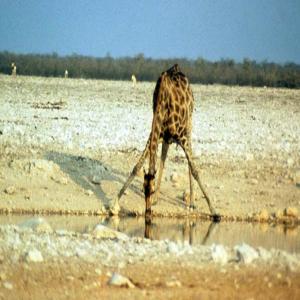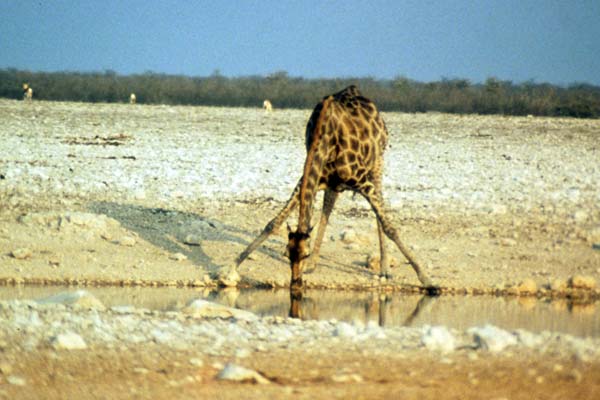Episodes

Monday Aug 30, 2010
The WildLife: Geoduck Trade, Craig Welch
Monday Aug 30, 2010
Monday Aug 30, 2010
Craig Welch, Seattle Times environmental reporter and author of Shell Games: Rogues, Smugglers, and The Hunt for Nature's Bounty, talks about wildlife trafficking in Puget Sound and the massive illegal trade in geoducks (pronounced “gooey-duck”) clams. He tells “The WildLife” host Laurel Neme how geoducks are more than fashionable seafood by providing an entrée into the dark underworld of illegal wildlife trade. Geoducks are a species of large saltwater clams native to the northern Pacific coasts of Washington State and the province of British Columbia.They’re the largest burrowing clam in the world, weighing on average 1 to 3 pounds, and also one of the world’s longest living organisms, with a life expectancy well over 100 years. Harvesting them is difficult, as these clams bury themselves deep into the muddy ocean bottoms and tidal flats, with only the small tips of their siphons evidence of their presence. To show just how difficult it can be, the Discovery Channel’s Dirty Jobs television show even went to a geoduck farm in 2006. Geoducks are prized for their meat, and are considered a delicacy in China and elsewhere. They’ve been featured on a variety of cooking shows, including Top Chef, Dinner Impossible, and Extreme Cuisine with Jeff Corwin.
A journalist for two decades, Craig Welch’s work has appeared in Smithsonian Magazine, the Washington Post, and Newsweek, as well as the Seattle Times. He has won dozens of local, regional and national journalism awards, and has been named the national Society of Environmental Journalists's Outstanding Beat Reporter of the Year. In 2007, he completed a fellowship at the Nieman Foundation for Journalism at Harvard University. Craig has hunted seals with tribal fishermen in Alaska, hitched helicopter rides with scientists in the melting Arctic, prowled the Oregon woods for endangered owls, and tracked the development of Wyoming’s oil fields. In researching his book Shell Games, Welch got an insider’s look at a group of dedicated state and federal wildlife agents who have devoted years to cracking down on the lucrative trade in geoducks in the Pacific Northwest. This episode of “The WildLife” aired on The Radiator, WOMM-LP, 105.9 FM in Burlington, Vermont on August 30, 2010.

Monday Jul 26, 2010
The WildLife: Marine Aquarium Trade, Brian Tissot
Monday Jul 26, 2010
Monday Jul 26, 2010
Brian Tissot, marine ecologist, discusses the marine aquarium trade. He tells “The WildLife” host Laurel Neme how the United States, as the world's largest importer of marine ornamental species for the aquaria, curio, home decor and jewelry industries, has an opportunity to leverage its market power to promote more sustainable trade and reduce the effects of this trade on coral reefs worldwide. The trade in coral and coral reef species for ornamental purposes is substantial and growing, with approximately 30 million fish and 1.5 million live stony corals removed from the ecosystem each year. The aquarium industry alone targets some 1,500 species of reef fish, and many die in transit, prompting collectors to gather even more animals to compensate for potential losses. With the United States accounting for over half of the ornamental trade in live coral, reef fish and invertebrates, Tissot and 17 other scientists are calling on this country to leverage its market demand—through additional regulation and enforcement, public awareness campaigns, certification of sustainable products, and assistance to spread best practices in source countries—to make the trade more sustainable.
Dr. Brian Tissot is a Professor in the School of Earth and Environmental Science at Washington State University Vancouver. His research is focused on the interface between biology, management, and policy and examines ecological interactions between habitat and commercially important marine fishes and invertebrates and the role of the community in managing marine resources. Through collaboration with state, federal and international agencies he is involved in a range of activities including basic research, research with implications towards resource management, and environmental policy development in Hawaii, Washington, Oregon and California. In Hawaii, he helped improve the management of an aquarium fishery along the Kona coast by being a part of a collaborative research program with state biologists and policy makers, SeaGrant extension, and the local community. On the west coast he is examining the role of continental shelf invertebrates, especially deep water corals, and how they function as critical habitat for commercially important fishes. Information from his work has been used to improve management strategies for coral reefs in the Pacific, west coast bottom trawling, and in the development of legislation in Congress. In addition to over 60 publications in scientific journals, Dr. Tissot's work has been featured in Scientific American, National Geographic News, Smithsonian magazine and in the Washington Post. This episode of “The WildLife” aired on The Radiator, WOMM-LP, 105.9 FM in Burlington, Vermont on July 26, 2010.

Monday Jul 12, 2010
The WildLife: Philippine Forest Turtle, Pierre Fidenci
Monday Jul 12, 2010
Monday Jul 12, 2010
Pierre Fidenci, president of Endangered Species International (ESI), talks about his work to save “forgotten” endangered species. Speaking to “The WildLife” host Laurel Neme from the Philippines, he tells of his recent activities to save the rare Philippine Forest Turtle, one of the most endangered turtles on earth that is found on only two islands in the southern Philippines, and also to stop dynamite fishing in the country’s coral reefs. A common focus in ESI’s work is its emphasis on addressing the needs of the people that live within the habitat in order to achieve sustainable conservation of the endangered species you want to protect. Pierre Fidenci was born in Southern France, and at an early age was already involved in discovering, studying, and protecting nature. At the age of only 20, Pierre started Las Baulas National Marine Park in Costa Rica. At that young age, he also had already won multiple environmental awards including from Paul Sabatier University, the Nicolat Hulot Foundation, the French Government (Défit Jeune), and the Zellidja Foundation. More recently, he has received conservation awards from the Bp Conservation Programme, the Turtle Conservation Fund, and the Sophie Danforth Conservation Biology Fund. He has developed and directed conservation projects in South-, Central-, and North America, as well as in south East Asia, and Europe. His areas of expertise include amphibians and reptiles, applied conservation, biological surveys, and community based projects. Pierre is also a member of the IUCN Species Survival Commission (SSC). This episode of “The WildLife” aired on The Radiator, WOMM-LP, 105.9 FM in Burlington, Vermont on July 12, 2010.

